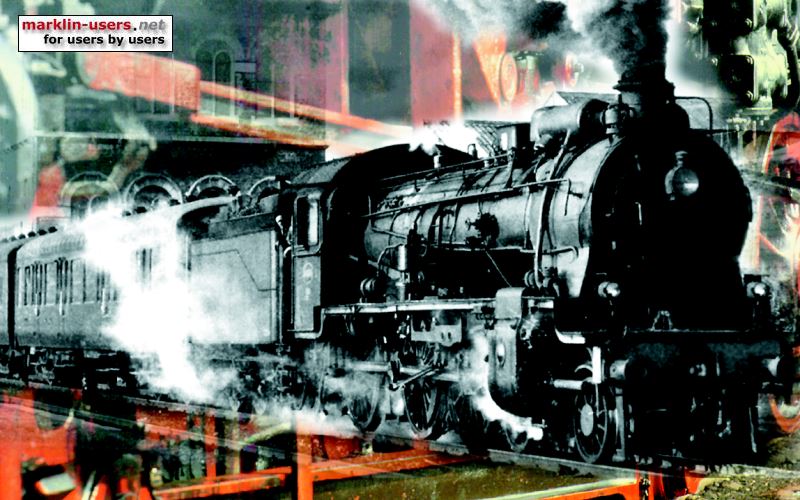
Updated 04.01.2014
This small steam engine is a very nice model, compact, heavy and rather detailed. I have three of these locomotives, 80 007 from 2866, 33042 MM2000 and 33043 80 030 museum locomotive. 3304 was equipped with an analogue electronic reversing unit.

Preparation for conversion:
Remove the electronic reversing unit and the motor. I left the wire from
the pick-up shoe, and soldered it to the decoder later on.
Motor:
Installation of the motor itself is very simple. After removal the old motor and
the reversing unit, make sure that all mechanical functions, like the
transmission, wheel axles and the rods, are good and that the locomotive is
clean. Install the new motor parts. Before inserting the brushes,
make sure once more that everything rotates perfect. If required, oil the
rotating parts very carefully. Do not use too much oil, as this may harm
the operation of the locomotive.
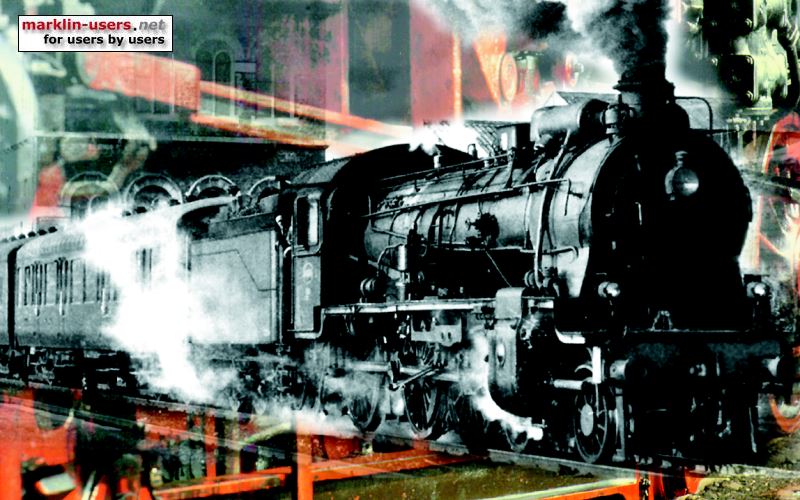
Decoder:
The 6090 decoder is popped into the black plastic holder where the original reversing
unit used to be. It suites perfect.
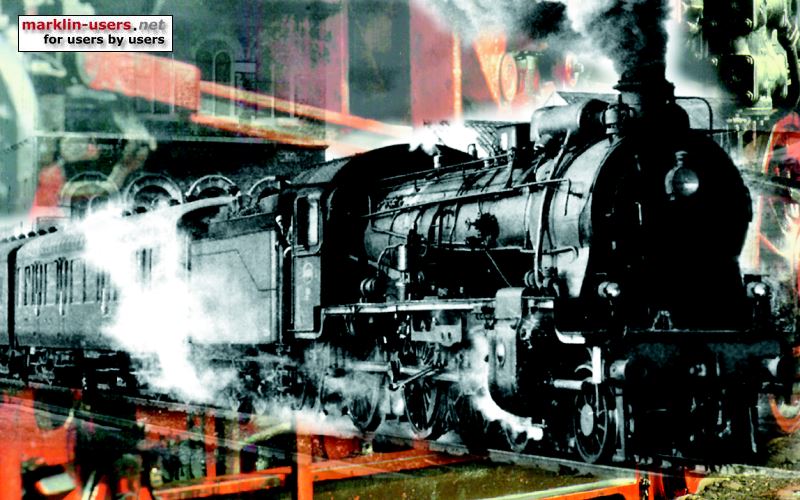
Note that the metal "tub" has no front wall. The plastic holder makes the
front wall up.
Decoder adjustment:
Max. speed:
The Br 80 had a maximum speed of 45 km/h. The speed
potentiometer must be set to minimum.
Acceleration and braking delay:
The potentiometer is adjusted to maximum.
Front and rear light:
The light printed circuit fitted to this locomotive, Märklin spare part number
240120, may be used almost as it is.
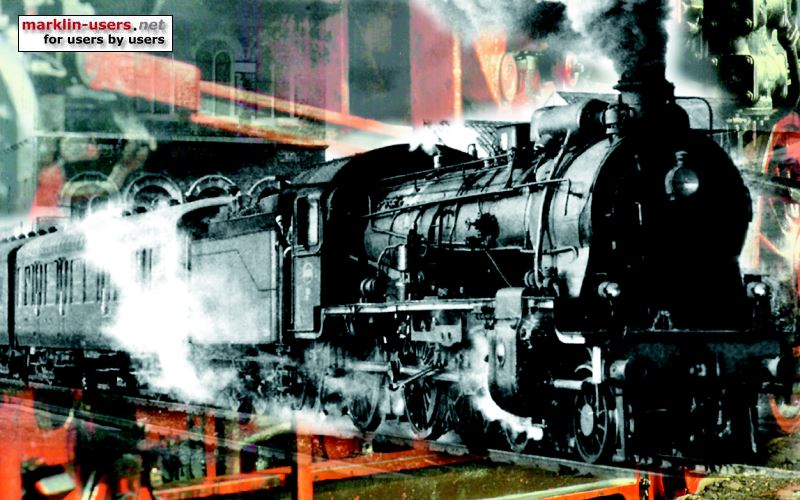
The above photo shows the light circuit board installed in the locomotive.
The only modification done to the board is that the lead between the two bulbs
are cut, just behind the front bulb.
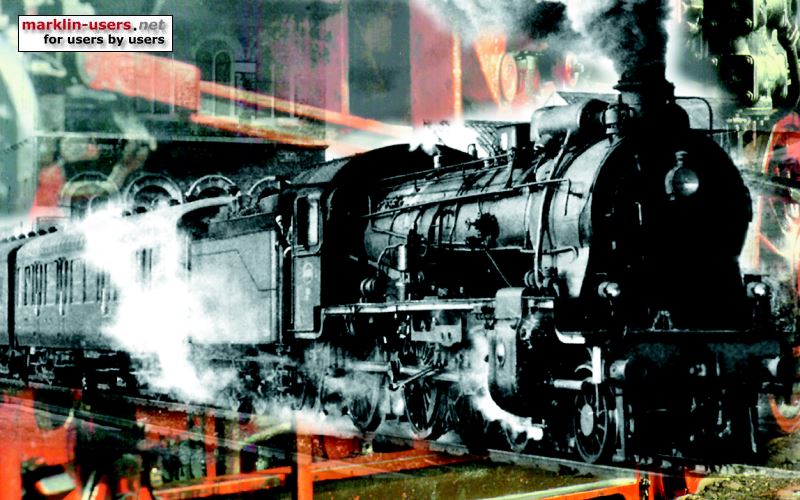
The black wire in the photo should be the orange one from the decoder, but the
6090 decoder does not have the orange common plus wire, so I made one by myself.
The reason for this is to have flicker free lamps. If the bulbs are
connected to the locomotive chassis, they flicker according to the digital
signal on the track.
See explanation below, from another conversion.
The screw is insulated from the board with a thin plastic washer or sheet. Check with
a circuit tester before soldering the three wires to the board, just behind the front bulb.
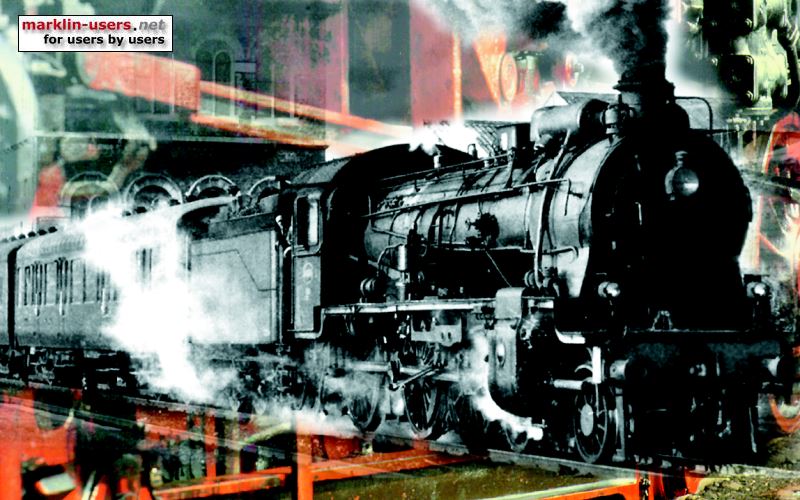
Photo from 33042
Flicker free light in digital operation:
The 6090 decoder offers no regulated plus for the lights. If the lamps are
connected directly to the locomotive chassis, they will flicker according to the
electrical pulses on the tracks. One way to avoid this is to insulate the
lamp from the locomotive chassis and to make a regulated plus by ourselves.
Solder the cathode (negative) side of a 2,7 Volt Zener diode to the cathode side
of the rectifier diodes of the decoder (see orange arrow). Our regulated
plus is now on the anode end of the Zener diode (purple arrow). The
switchable negative current to the lamps are at the yellow (rear light) and gray
(front light) arrows.
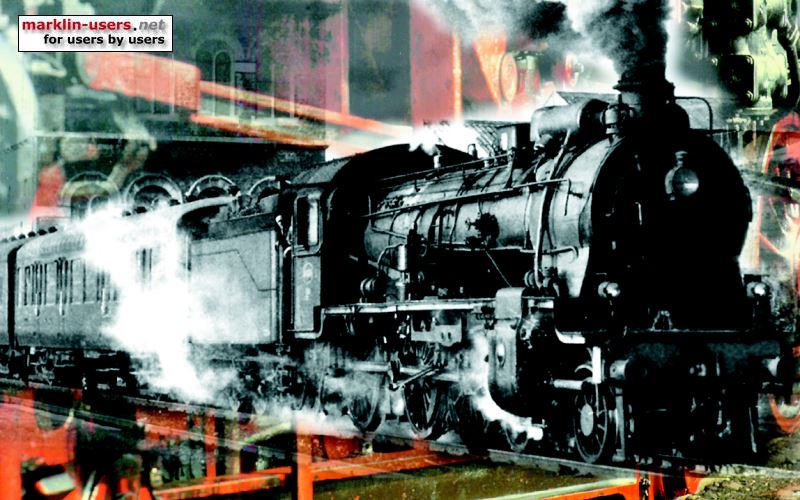
Be very careful, to avoid short circuits.
Parts used for the conversion:
Märklin no.
Qty.
Description
6090
1
Conversion set with c90 decoder
610080
2
Bulbs, front lights
-
1
2,7 Volt Zener diode to make regulated plus
-
1
Plastic sheet to insulate light circuit board
Br 80 prototype information, from Wikipedia:
| locomotive numbers | 80 001–039 |
| number built | 39 |
| Manufactured by | Hohenzollern 22 Union 7 Wolf 5 Jung 5 |
| Years of production | 1927–1928 |
| Retired: | 1977 |
| Axle arrangement | C |
| Gauge: | 1,435 mm |
| Length overbuffers: | 9,670 mm |
| Service weight: | 54.4 t |
| Adhesive weight: | 54.4 t |
| Axle load: | 18.2 t |
| Maximum speed: | 45 km/h |
| Indicated Power: | 423 kW |
| Driving wheel diameter: | 1,100 mm |
| No. of cylinders: | 2 |
| Cylinder bore: | 450 mm |
| Piston stroke: | 550 mm |
| Boiler pressure: | 15 bar |
| Grate area: | 1.54 m² |
| Superheater area: | 25.50 m² |
| Evaporative heating area: | 69.62 m² |
| Brakes: | Direct-release Knorr compressed-air brakes |
| Auxiliary brake: | yes |
| Parking brake: | K-GP mZ counterweight |